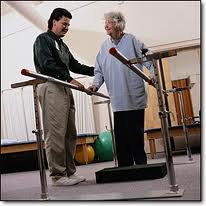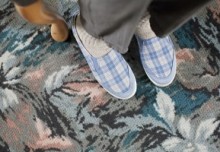 The best estimates suggest that more than 7 million American have experienced and survived a stroke of some sort. Most of these people will be dependent in some capacity on a caregiver or certified geriatric care manager, because full recovery is relatively uncommon. In fact, the percentages break out generally along these lines:
The best estimates suggest that more than 7 million American have experienced and survived a stroke of some sort. Most of these people will be dependent in some capacity on a caregiver or certified geriatric care manager, because full recovery is relatively uncommon. In fact, the percentages break out generally along these lines:
- 10 percent of stroke victims will recover almost completely
- 25 percent will recover, but still manifest small deficits
- 40 percent will require ongoing care for moderate to severe deficits
- 10 percent will depend on skilled nursing care in a facility
- 15 percent fail to recover and will die within a short time of their stroke
Some of what will determine the category of a stroke victim is how severe the hemorrhage or clot was in the first place as well as how promptly medical attention was received. The rest will depend upon the rehabilitation following the acute phase of the stroke episode.
Those who have suffered a “mini-stroke” or what are called transient ischemic attacks (TIAs) may recover spontaneously, but for the vast majority active physical rehabilitation will begin as soon as possible in the hospital. If the patient is stable following a stroke, rehab can begin within two days of the event. Once discharged, if you are a caregiver you want to be well-informed so that you can have an effective conversation with the care team at the hospital to get the best match of rehab for your loved one. This is where we often become involved with families of stroke survivors. This is so that the best care is provided and everyone has a clear picture of the goal of the therapy as well as the work that will be required to get there. The principal objective of all rehabilitation is to restore or improve physical function, but rehab also focuses on giving the stroke victim maximal independence and quality of life. To do this, some skills that have been taken for granted may need to be relearned, such as eating, walking or dressing.
If you are a caregiver to a stroke patient, you will want to learn the language of rehabilitation in order to be the best advocate you can be for your loved one. The National Stroke Association has created a guide for choosing the right rehabilitation facility as well as understanding who all the players will be and what you should expect from each. It also includes a grading form so that you can compare facilities in order to pick the best program for your loved one. For a download of this Guide, just click here.
Charlotte Bishop is a certified Geriatric Care Manager and founder of Creative Case Management, certified professionals who are geriatric advocates, resources, counselors and friends to older adults and their families in metropolitan Chicago. Please email your questions to ccbishop@creativecasemanagement.com.





